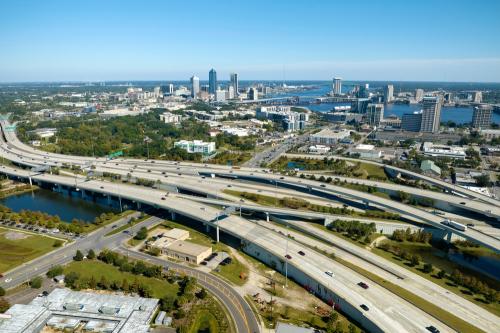One of the few bipartisan agreements in Washington, D.C. these days is that our country needs to bridge the digital divide and guarantee that no area is bereft of the broadband infrastructure necessary to thrive in the 21st century information economy.
Despite that consensus, the digital divide is about to get worse, and current policies will exacerbate it. We need to replace those policies with a coordinated approach that provides appropriate incentives for all stakeholders to bridge widening gaps.
The broadband goalposts keep moving
The nature of the digital divide is neither static nor scientific. The roots of the issue lie in the dial-up era, when policymakers were concerned that the telephone companies (telcos) would not enable 56K dial-up service in low-income areas. Eventually, the telcos deployed dial-up everywhere. Cable’s entry into broadband killed the dial-up era, forcing telcos to offer their own broadband alternative, DSL.
By 2010, when the Federal Communications Commission (FCC) launched the National Broadband Plan, most American communities had a cable offering and a telco offering, with the cable offering usually superior in bandwidth. Yet even then, about 10 percent of the population was stuck with only a telco offering that didn’t qualify as broadband access. The economics of deploying higher-speed wired service didn’t make sense, and no wireless offering would reach the necessary speeds. The digital divide morphed, so the Plan set a target of hitting speeds of 4Mbps in every home to enable internet browsing and light streaming.
That number is now outdated. Today, consumer choices are even more complex and uneven. Many metro areas with cable today will receive upgrades to gigabit service (1,000Mbps). In some of those communities, there may also be a gigabit fiber service via a telco, Google Fiber, or both. Some of the densest and wealthiest neighborhoods will soon receive 5G service, a wireless high-speed alternative. But current cable offerings still leave millions of households without a gigabit option, with millions more stuck with only DSL, now insufficient for modern internet use.
The economic reality of these varied deployments is that communities with the fastest speeds are most likely to benefit from competition among providers, which further pushes prices down. Thus, we soon will have a divide in which certain dense and high-income communities will have multiple choices for affordable gigabit services, while less dense, lower-income communities may still be stuck with a DSL offering that is 100 times slower but similarly priced. In between the two extremes, there will be places with more or less gigabit offerings, with the gap in price and performance of the best and the worst markets greater than it is today, with many more communities believing they are either being charged too much or otherwise left behind.
No one knows for certain how the trends will play out over the next decade, especially if 5G will serve most neighborhoods. Wall Street estimates are all over the map. Much depends on whether the initial build-outs generate acceptable returns. While federal officials are enamored with the tremendous upside that 5G may offer, business executives are much less so. According to management consulting firm Bain, 53 percent of mobile business executives believe there is no short-term business case for 5G. If they are right, don’t expect Wall Street to fund the $275 billion some expect it would take to build out the network nationwide.
In short, all signs point toward the gap between the services and value offered to the wealthiest and the poorest continuing to grow throughout the United States.
Time for a new Digital Divide Compact
Every sector of the economy continues to find new ways to rely more on digital services. But leveraging these services requires ubiquitous, abundant, and affordable bandwidth. Every level of government should thus have an explicit objective to eliminate the digital divide. So what can the public sector do to address the gaps?
- No government should impose build-out requirements on telecommunications companies. Some argue that just as there were universal build-out obligations for telephone or cable providers, there should be similar requirements on next generation networks. That argument ignores that enterprises that built the first-generation telephone and cable networks received a government guaranteed monopoly. The government should not and cannot offer such a guarantee now. In today’s market, an obligation to build everywhere could result in building nowhere.
- Governments need to do better in collecting and analyzing data. While we consider how broadly market forces will drive next-generation deployments, governments should improve their mapping of broadband availability and pricing to more accurately define the geographic and demographic parameters of the digital divide and guide future actions.
- Federal, state, and local governments should send carriers clear signals about their goals. At some point, government forces are likely to respond to constituent concerns about being left behind and use public funds to subsidize unserved or underserved areas. Carriers do not want the government to do so where they believe a business case exists for pure private funding. The government should be clear now about how long it will wait, and the network performance it needs, before it will take action. This will give private enterprises incentives to clarify and accelerate deployment plans.
- Rural communities need a restructured program to provide more effective tools for addressing their broadband deficits. I will describe these tools in greater detail in an upcoming blog,
- Policies should empower local governments, which are most likely to understand and care about the specific nature of the local digital divides, in both rural and metropolitan areas. They, far more than the FCC, know where the holes will be and will be accountable to local concerns. Further, local governments can deploy a number of appropriate incentives for companies to build more broadly. San Jose, Calif. has a deal with carriers requiring them to support efforts to overcome the digital divide. New York City charges less for rights-of-way access in areas where it’s trying to encourage deployment Lincoln, Neb. boasts a conduit system that assures all parts of the city are covered. And Boston combines a new licensing system with an opportunity to lease city fiber to encourage broader deployment. In short, many cities have developed appropriate ways to address their specific local issues.
Reforms can happen now
Unfortunately, federal policy is currently doing the opposite, preempting cities from taking such actions and replacing city creativity and tailored solutions with a top down, one-size fits all federal approach. The FCC now mandates that cities invest their own funds to enable faster construction permitting for one industry and lower their charges for access to rights of ways to a federally set price. This effectively transfers $2 billion from cities to carriers. In return, the FCC asks carriers for nothing, and as the carriers admitted, it will not affect their deployment plans.
This FCC itself admitted that it prioritized the private carriers. In doing so, it ignored the obvious: The digital divide exists because private carriers don’t want to serve areas where the return on investment is below their benchmark.
This is not a criticism of the carriers that invest capital where they can earn an acceptable return. We should, however, criticize a government agency that stresses bridging the digital divide in words, but in action robs the entities best positioned to address that divide. We need to replace the current drive to help grow carrier wealth with a coordinated approach that understands the market economics and provides appropriate incentives for all stakeholders to bridge a widening divide.







Commentary
The coming digital divide: What to do, and not do, about it
February 15, 2019